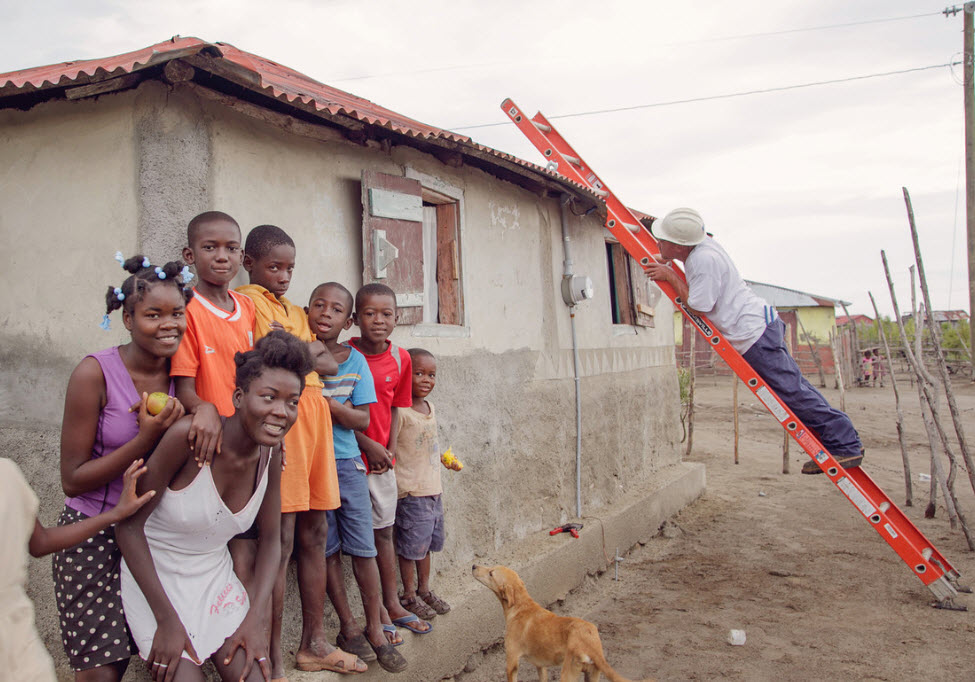 In the northern region of Haiti, the sleepy village of Caracol was without reliable electricity. Without power, Caracol’s 5,000 residents struggled, and most earned a meager living by fishing or mining the local salt flats.
In the northern region of Haiti, the sleepy village of Caracol was without reliable electricity. Without power, Caracol’s 5,000 residents struggled, and most earned a meager living by fishing or mining the local salt flats.
But now, you’ll find this tiny city starting to blossom, in part because of NRECA International and its partners.
Today, there is a new power plant in Caracol’s industrial park—thanks to a venture sponsored by the InterAmerican Development Bank. Another endeavor called Haiti’s Pilot Project for Sustainable Electricity Distribution (PPSELD), launched a more effective distribution grid and power lines, and an established private utility—all funded by the US Agency for International Development, and managed by NRECA International. The result? 24/7 reliable electricity.
“The national power company over the last 25 years has had a rather poor record of collections and operations. There were no existing power lines, there was nothing. So we ordered materials, we did surveys, made material lists, then we began working with local people,” said Myk Manon, NRECA International country director in Haiti.
Since electrification a year ago, the community is getting used to the changes, starting with the schools.
“If we did not have electricity,our technology room would not have been in operation because there is a need to charge about 35 laptops on a regular basis,” said Jean Mirvil, headmaster of the S&H School.
Caracol is a success story. Thousands are employed in the industrial park, and now PPSELD has expanded electric service to towns of Limonade, Terrier Rouge, Trou Du Nord and Sant Suzanne. These communities now also have safer streets, improved healthcare, and a chance at a better life.
“One could rarely go a day without receiving the news of an event of a shop being robbed in one neighborhood or another,” said Gary Michel, a community leader from Trou Du Nord. “Today, thanks to the establishment of the electric light, residents are no longer closing their doors at 7:30 in the evening as they did in the days of darkness.”
“The medical equipment working with electric energy! That has been a huge event,” said Dr. Rolando Garcia, a doctor at the hospital from the same town. “The hospital is now full of patients waiting to see their doctors; before there were no patients at all. Now they come because they know they are going to get an x-ray, an electro cardiogram, get ultra sound treatment.”
As the PPSELD project continues to gain traction, Manon hopes to see the model replicated throughout Haiti.
“Our role is to show you can have a distribution power company that does not need to be subsidized and can stand on its own revenues,” Manon stressed. “The sustainability of it is very key. Again, this is a pilot project and they want to use it as an example to replicate in other parts of the country if it’s successful.”
PPSELD’s success relies on the local employees who manage daily operations. Most of the staff come from the surrounding communities and they are trained to be managers, billing clerks, assistants, consumer services advocates, linemen, and groundmen. There are now about 28 full-time staff working at the PPSELD office.
Herve Pierre Louis, who previously served as the operations manager at the National Electric Company is now PPSELD’s general manager. And for him, the success is already evident.
“This project is changing the lifestyle of the rural people,” said Pierre Louis. “They can have good water, fresh water, they can save produce, especially the fish, and this is amazing. It’s amazing how the lives of the people are changing here.”